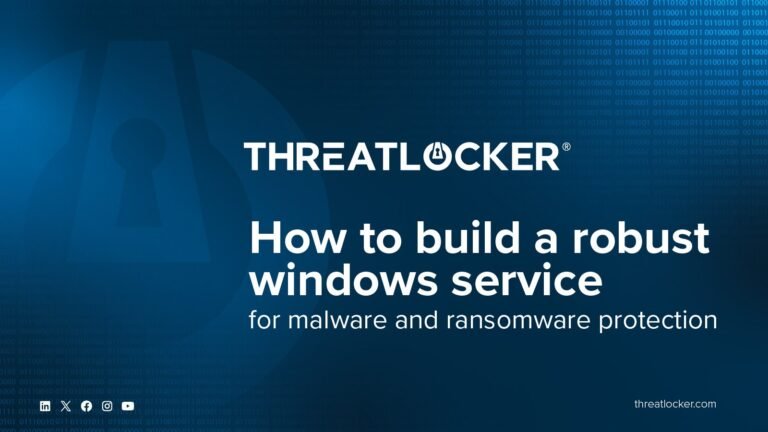Quick Takeaways
-
Minimal Attack Surface: Design security services with the least privilege principle, granting only essential permissions to reduce vulnerabilities to exploitation.
-
Real-Time Monitoring and Response: Implement continuous system activity monitoring and the ability to respond instantly to threats, allowing for isolation and remediation without user intervention.
-
Robust Architecture: Incorporate components like a Monitoring Engine, Detection Module, Response Unit, Logging, and a secure Communication Interface to ensure comprehensive threat detection and mitigation.
- Appropriate Development Tools: Utilize Visual Studio and .NET alongside Windows APIs and Machine Learning libraries for advanced threat detection, ensuring the service performs effectively under various conditions.
Underlying Problem
In a detailed exposition by Farid Mustafayev, a Windows Service Developer, vital principles for designing security services are articulated, underscoring the imperative of minimal attack surfaces, real-time monitoring, and robust resilience against threats such as malware and ransomware. The discussion elucidates that these principles are not merely theoretical; they serve to safeguard digital environments by reducing vulnerabilities and ensuring rapid response capabilities when threats arise. Mustafayev emphasizes the necessity of leveraging the right development tools, including .NET and machine learning frameworks, to construct services that not only identify but also neutralize threats preemptively.
The narrative hinges on the multifaceted architecture of a security service, which encompasses components like a Monitoring Engine, Analysis Module, and Response Unit, each integral to a cohesive defense strategy. This comprehensive framework facilitates continuous surveillance of system processes, file activities, and network traffic, enabling the identification of abnormal behavior and initiating corrective measures without human intervention. The article serves as a crucial resource for developers tasked with fortifying Windows environments against ever-evolving cyber threats, and it is centered on a clear commitment to elevating security through strategic design and robust technological integration.
Potential Risks
The risks posed by inadequate security measures in a Windows service extend far beyond the immediate effects on the individual business developer; they reverberate throughout the broader ecosystem, potentially jeopardizing the integrity and safety of affiliated organizations and users. A compromised security service, due to insufficient adherence to the principles of minimal attack surface, real-time monitoring, and robust architecture, can become a launchpad for widespread cyberattacks. Such vulnerabilities can lead to data breaches and unauthorized access, impacting clients, partners, and even third-party service providers who depend on these systems for secure operations. Consequently, stakeholders may face significant financial losses, reputational damage, and legal ramifications resulting from failed compliance with security protocols. Furthermore, as malicious actors exploit these weaknesses, the ensuing chaos can trigger a cascading effect, undermining trust across affected organizations and industries, ultimately tilting the balance of operational reliability and user confidence.
Possible Action Plan
Timely remediation is crucial in the digital landscape, especially when addressing malware and ransomware threats that can cripple systems and compromise sensitive data.
Mitigation Steps
- Regular updates
- Advanced threat detection
- User education
- Access controls
- Backup solutions
- Network segmentation
- Incident response planning
NIST Guidance
NIST CSF emphasizes proactive risk management, highlighting the importance of identifying and responding to threats. For comprehensive details, refer to NIST SP 800-53, which outlines security and privacy controls necessary for implementing an effective cybersecurity framework.
Continue Your Cyber Journey
Discover cutting-edge developments in Emerging Tech and industry Insights.
Explore engineering-led approaches to digital security at IEEE Cybersecurity.
Disclaimer: The information provided may not always be accurate or up to date. Please do your own research, as the cybersecurity landscape evolves rapidly. Intended for secondary references purposes only.
Cyberattacks-V1

